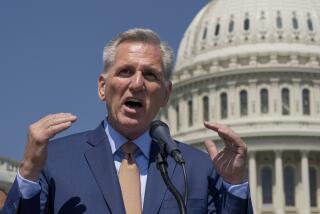U.S. contemplates 50- and 100-year bonds after yields plummet

- Share via
With interest rates on 30-year U.S. debt hitting all-time lows this week, the government is once again considering whether to start borrowing for even longer.
The U.S. Treasury Department said Friday that it wants to know what investors think about the government potentially issuing 50-year or 100-year bonds, going way beyond the current three-decade maximum.
The government stressed that no decision has yet been made on ultra-long bonds, explaining that it’s looking to “refresh its understanding of market appetite.” The idea was broached before, in 2017, but was shelved after receiving a less-than-warm reception.
“This comes up every now and again,” said Gennadiy Goldberg, U.S. rates strategist at TD Securities. “Every time the takeaway is, there simply isn’t enough demand at that tenor, or at least there hasn’t been in the past.”
The announcement follows a plunge in the 30-year yield to a record low this week below 2%, and also comes in the wake of many other nations opting to extend their borrowing profiles with so-called century bonds. Investors have snapped up 100-year bonds issued by the likes of Austria, although the experience of Argentina underscores some of the potential pitfalls of buying such long-maturity debt.
The yield on America’s current benchmark 30-year bond spiked to its highs of the day and the curve steepened following the Treasury announcement. The 30-year rate climbed as much as 8 basis points on the day to 2.05%, before ending the session around 2.03%.
The Treasury’s group of market consultants, the Treasury Borrowing Advisory Committee, has long been unenthusiastic on the prospect of an ultra-long issue, said Bruno Braizinha, director of U.S. rates research at Bank of America.
The challenge for the Treasury would be to offer a yield attractive enough for the typical investor base of pension funds and institutions, while keeping a lid on the cost of borrowing for U.S. taxpayers.
By Braizinha’s estimates, the yield on a 50-year issue would be expected to come in around 10-30 basis points above the 30-year rate.
Harris and Barrett write for Bloomberg. Liz Capo McCormick, Benjamin Purvis and Katherine Greifeld of Bloomberg contributed to this report.
More to Read
Inside the business of entertainment
The Wide Shot brings you news, analysis and insights on everything from streaming wars to production — and what it all means for the future.
You may occasionally receive promotional content from the Los Angeles Times.










